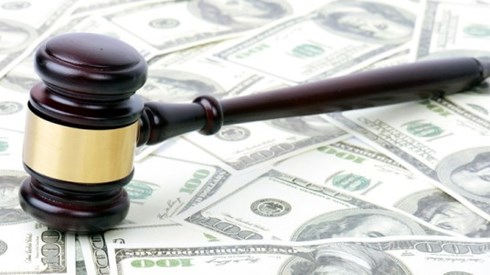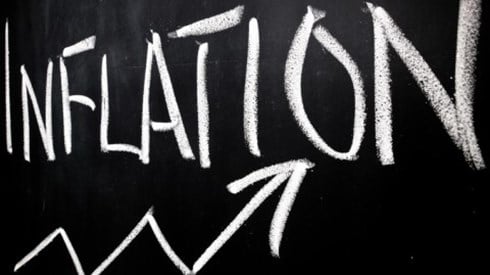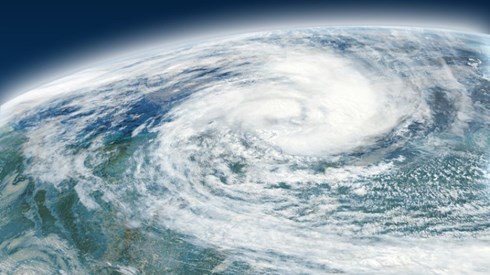Groups' Analysis Finds Man-Made Causes Fuel Property Insurance Crises

August 31, 2022

While weather-related disasters are becoming more frequent and more costly, the crises in some property insurance markets are being fueled largely by man-made causes, a new report from a group of insurance industry trade associations suggests.
The report, It's Not Just the Weather: The Man-Made Crises Roiling Property Insurance Markets, notes that insurers' disaster claims payouts now approach an average of $50 billion annually, up 25 percent from a decade ago, adjusted for inflation.
The report, from the American Property Casualty Insurance Association, the Reinsurance Association of America, and the Association of Bermuda Insurers and Reinsurers, acknowledges that "Climate change, rapid population growth in disaster-prone states and, more recently, inflation all play important roles in driving the cost of insuring natural disasters upward.
"Yet managing these risks is precisely what insurers are equipped to do, while bringing relief and protection to the millions of home and business owners impacted by these tragic events each and every year," the report says.
Still, many states' property insurance markets are showing signs of stress, according to the report, with the markets in several states in crisis and some insurers having recently become insolvent.
"The principal conclusion of our analysis is that crises in property insurance markets today frequently have little to do with Mother Nature," the report says. "Instead, man-made crises in the form of legal system abuse, claims fraud, and regulatory interference are the root causes of most market instability."
Each of the issues increases costs in the property insurance system, the report says, which results in higher premiums for policyholders. In addition, market instability increases uncertainty, forcing some insurers to restrict coverage, cancel or nonrenew policies, and leave markets.
"Just as with natural disasters, the cost of these man-made crises is measured in billions of dollars," the report says. "But unlike perils such as hurricanes, wildfires, and tornados—which can be readily modeled and priced by insurers—legal system abuses, fraud, and misguided regulation cannot."
The unmodeled man-made risks can threaten insurers' solvency in some cases, the trade groups suggest, forcing insurers to take drastic steps to protect and conserve their capital, leading to adverse impacts on insurance prices, coverage availability, and insurer competition.
While rapid population growth in catastrophe-prone areas and inflation have no doubt contributed to increased loss costs, "the tripling of rebuilding and repair costs since the 1990s (a nearly 10-fold increase since the 1980s) well exceeds the impacts of demographics, economics, and even climate," the report says. "Indeed, a closer examination of cost drivers in many catastrophe-prone states over the past 30 years reveals that man-made disasters, originating in a state's legal system and regulatory environment, are a root cause of periodic crises that lead to large scale insurance market disruptions. Invariably, these crises increase costs and reduce insurance availability."
The report notes that states like Florida, Louisiana, and California are experiencing a growing number of policy nonrenewals, tighter underwriting restrictions, insurer rating downgrades, insurers leaving markets, and insurer insolvencies. "The consequences, as in past crises, are largely borne by policyholders who face higher prices and fewer options when shopping for insurance," the report says.
History suggests that the man-made damage to those states' insurance markets will have to become catastrophic before policymakers enact the needed reforms, according to the report.
"The current insurance crises in Florida, California, and Louisiana have a common denominator—each was manufactured by the state itself through a combination of misguided regulation and a legal environment that encourages excessive litigation," the report says. "As history has demonstrated, the consequences of failing to adequately address these crises could manifest in the form of reduced availability and affordability of insurance for tens of millions of home and business owners."
The report notes the impact of legal system abuse and lawsuit inflation on property insurers. Litigious environments coupled with the growth in lawsuit verdicts create windfall opportunities for bad actors looking to capitalize on insurance claims, the report says. Such abuse is particularly rampant in catastrophe-prone areas, where opportunists target families and businesses overwhelmed following disasters while insurers look to address a large number of claims.
Social inflation—changing attitudes toward what represents fair compensation—is adding to the negative impacts the existing legal system is having on property insurers, according to the report.
Fraud and abuse represent another man-made crisis affecting property insurance markets, the report suggests. "Fraud specifically related to property insurance claims represents a significant portion of the large and growing amount of insurance fraud in the United States—an issue that costs everyone," the report says. It cites Federal Bureau of Investigation data that non-health insurance fraud costs more than $40 billion per year.
Another factor contributing to property market crises is government interference, the report suggests.
"Insurers are facing increasing challenges in managing risk due to government mandates and interference," the report says. "While there is overwhelming scientific evidence that climate change is a real and immediate threat, which is resulting in more frequent and severe natural disasters, the insurance industry has made significant improvements to be responsive in managing the resulting increase in catastrophic exposure. However, regulators are not allowing the voluntary market to function properly."
In order to alleviate the crises in some property insurance markets, state lawmakers and regulators must address the underlying issues, according to the industry trade groups.
"Legal system reform, anti-fraud measures, and promoting regulatory stability and mitigation to help reduce future losses are imperative to restoring market health in catastrophe-prone markets," the report says. "Such actions are critically necessary in Florida, Louisiana, and California, where these issues are most pronounced, though they are not limited to these states."
The report makes specific recommendations in each of the three areas that the industry trade groups suggest can address the problems and improve conditions in troubled property insurance markets.
August 31, 2022



